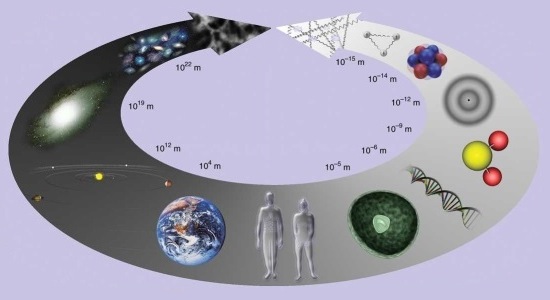Introduc
Astronomy and Astrology
Even in the twenty-first century many people regard planets and stars have supernatural forces that control their lives. For ancient people, the study of the heavens was not an abstract subject; it was connected directly to the life-and-death necessity of understanding the actions of the gods and currying favor with them. Before the time of our scientific perspectives, everything that happened in nature—from the weather, to diseases and accidents, to celestial surprises such as eclipses or new comets—was thought to be an expression of the whims or displeasure of the gods. Any signs that helped people understand what these gods had in mind were considered extremely important.
Read more about it ( Source: https://courses.lumenlearning.com/astronomy/chapter/astrology-and-astronomy/)
Scientific Notation
Astronomers use extremely large and small numbers to quantify their findings. As such, introduction to scientific notation is required to understand Astronomy better. An in-depth discussion about why and how scientific notation is used here.
Scientific Notation Review[3]:
https://www.khanacademy.org/math/pre-algebra/pre-algebra-exponents-radicals/pre-algebra-scientific-notation/a/scientific-notation-review
Scientific Notation Practice:
https://www.khanacademy.org/math/pre-algebra/pre-algebra-exponents-radicals/pre-algebra-scientific-notation/e/scientific_notation
From the extremely small to the unimaginably large[2]
Why is carbon more abundant than gold in the universe, and where do these substances come from? This question will hopefully be answered by the end of this section concerning the building blocks that make up the entire universe. Understanding these basic units allows us to manipulate their properties to advance our technologies and cater them to our ever-changing needs. Everything, from the smallest computer chip in your iPod to you to the largest galaxies in the universe, is comprised of what we now call atoms. The study of atoms and their behaviours has led to some very interesting and useful discoveries, without which there would not be an iPod at all. Peruse this section and learn about the basic constituents of that tree you can see from your window, as well as yourself!
If you were asked to imagine an apple, including how it behaves, what it looks like and its size compared to other objects you would have very few problems. This is mostly because, although we don’t really realise it, an apple is of the same order of magnitude as the world we regularly interact with. It’s also easy, for instance, to visualise a computer or another human being. Trying to imagine a single grain of sand or the sheer scale of mountains compared to ourselves is far trickier. This is the reason why our imaginations have such a difficult time comprehending the scale of the universe, for example, or the size of an atom.

The average atomic radius is of order 10-10m, a million-billion times smaller than the scale on which we generally see and interact. While the size of our galaxy, the Milky Way is on the scale of 1020m, more than a billion-billion times larger than us. These huge differences make understanding the concepts of the workings of these objects difficult. It also means that observing them in order to further our understanding is hard and requires complicated instruments. Atoms can be observed using a scanning tunnelling microscope, and can even be moved into patterns. However, operating this sort of machine is similar to trying to build a house of Lego while wearing boxing gloves. The difference between our scale and the scale of the atoms makes studying and manipulating them a real challenge. On the larger scales, the sheer distance of billions of light years to other galaxies makes observing them and interpreting what we see highly difficult.
In order to make working with such large and small numbers slightly easier, we have a naming convention, shown below, for the different orders of magnitude. Wavelength, for example, is usually quoted in nanometres, or distances to astronomical objects in megaparsecs.
| Name | The Number | Prefix | Symbol |
| trillion | 1,000,000,000,000 | tera | T |
| billion | 1,000,000,000 | giga | G |
| million | 1,000,000 | mega | M |
| thousand | 1,000 | kilo | k |
| hundred | 100 | hecto | h |
| ten | 10 | deka | da |
| unit | 1 | ||
| tenth | 0.1 | deci | d |
| hundredth | 0.01 | centi | c |
| thousandth | 0.001 | milli | m |
| millionth | 0.000 001 | micro | µ |
| billionth | 0.000 000 001 | nano | n |
| trillionth | 0.000 000 000 001 | pico | p |
You may think that on such different scales there cannot be a connection between atoms and galaxies. However, scientists have fairly recently realised that you cannot fully understand the processes within a galaxy without understanding what it’s made of at the most basic level of atoms and smaller. Nuclear physics in particular spans the great divide of the scales, as you will see in a later chapter concerning stars and the critically important process of stellar nucleosynthesis.